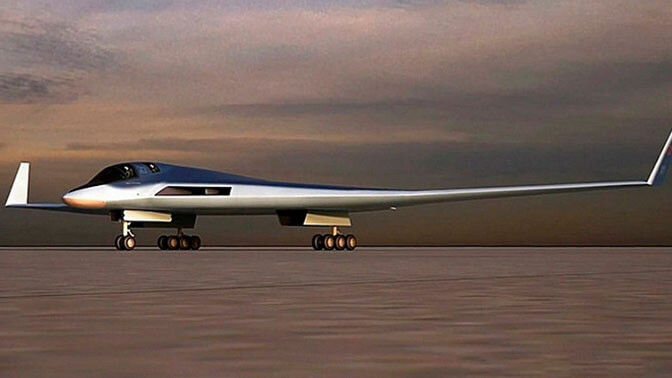Three days after the United States Air Force shared new visuals of its upcoming B-21 Raider, the Russian Defense Ministry announced it signed the contracts regarding the production of its own future long-range strategic bomber, the PAK-DA.
On February 3, the television channel Zvezda reported that the Ministry had just “signed all the necessary contracts to start production of a promising long-range aviation complex.” The contract includes three prototypes of the PAK-DA (Prospective Aviation Complex for Long-Range Aviation) destined to carry out a “preliminary” test campaign between 2023 and 2025. If the campaign proves conclusive, further testing by the Russian military will take place in 2026, with the aim of starting mass production in 2027 earliest.
“The characteristics of the aircraft have been agreed upon, all contract documents necessary for the production of samples have been signed, preparatory design stages are underway,” Aleksey Krivoruchko, Deputy Minister of Defense, said.
Not much is known so far regarding the characteristics of the Tupolev PAK-DA. However, throughout the years, Russian officials have indicated that it should take the form of a flying wing, much like the U.S. B-2 Spirit and B-21 Raider, and be stealthy. It would be operated by a crew of four people, much like the Tupolev Tu-160.
As for its specifications, the PAK-DA is expected to have an operational range of around 12,000 kilometers (7,500 miles) and be able to remain airborne for up to thirty hours. It would carry a payload of 30 tons, ranging from long-range cruise missiles, both nuclear and conventional, including the upcoming hypersonic 3M22 Zircon missile. The PAK-DA will replace both the Tupolev Tu-95 “Bear” and the Tu-160M “Blackjack”.
A day before the signing of the contract was made public, the modernized version of the Tu-160M made its maiden flight from the runway of Tupolev’s Gorbunov factory in Kazan, capital of Republic of Tatarstan, Russia. This update will see the supersonic bomber refitted with new communication and control systems, a new radar and new means of electronic warfare. It should also eventually be fitted with the Kuznetsov NK-32-2, the largest and most powerful engine ever fitted on a combat aircraft that should also power the PAK-DA.
The PAK-DA, an answer to the B-21 Raider?
Since the Cold War, strategic bombers are diplomatic weapons for the United States and Russia. The trajectory or destination of their flights often carries a message.
For example, on October 25, 2019, the visit of two nuclear-capable Russian Tu-160M strategic bombers to South Africa was seen as a concrete display of the strategic partnerships it is creating on the continent and the extent of its power projection capabilities, even on the U.S.’ historical turf in the Indian Ocean.
In December 2018, a similar air group flew to Venezuela for a joint exercise to test the interoperability of the air forces of the two countries. At the time, Secretary of State Mike Pompeo defined the presence of the two nuclear-capable bombers as “two corrupt governments squandering public funds, and squelching liberty and freedom while their people suffer”.
Similarly, Washington deployed a formation of B-52 bombers in the Middle East in May 2019, as a consequence of the deteriorating relations between the United States and Iran.
Thus, one could imagine that the announcement of the PAK-DA prototype production was a direct answer to the US Air Force recent communication on its future strategic bomber, the B-21 Raider.

